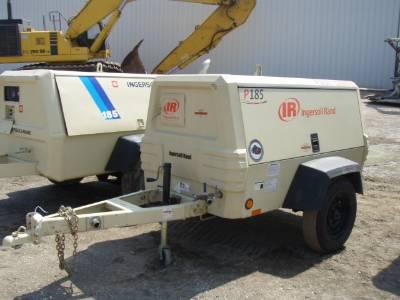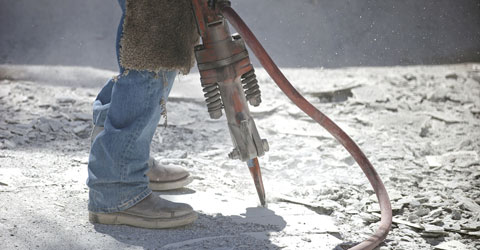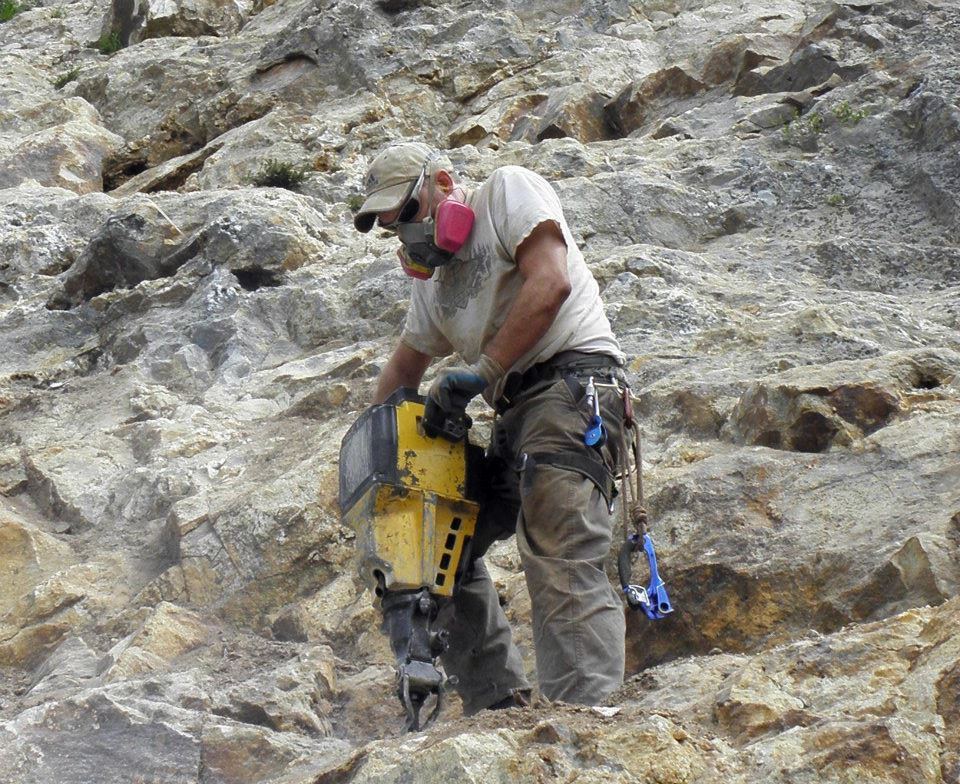Compressed air plant
Contents |
[edit] Introduction
There are a wide range of tools and plant on construction sites that use compressed air as their power source. The advantage that this equipment has is that the power source is very mobile and so they can be easily handled, which can be beneficial on isolated sites or in confined spaces.
The type of plant will depend on the nature of the work involved. The type of compressed air system can be either:
- Local: The compressor unit, with air-receiving tank, is mounted on a mobile unit for moving around the site.
- Centralised: A larger, semi-permanent compressor house is built to accommodate the plant and a network of air pipes taken to various outlet points.
[edit] Air compressors
The two main types of compressor are the reciprocating or piston type and the rotary impeller type.
[edit] Reciprocating compressor
This can be either single stage or multi-stage:
- Single stage: Air is drawn into the cylinder and a piston compresses it in one stroke.
- Multi-stage: Air passes through a series of cylinders, each of which contains air at increasing pressures.
Multi-stage compressors have the advantage of giving greater efficiency, and are suitable for high pressures and high volumes of air. This makes them useful for centralised plant, as the amount of compressed air can be as much as 130 m3 per minute.
[edit] Rotary compressor
These consist of a high-speed rotor mounted in a cylinder. Air is drawn in from an intake port by centrifugal force and exits through the delivery port when the required pressure has been achieved. Air receivers store the compressed air as it leaves the high pressure cylinder and minimise pressure fluctuations.
[edit] Tools and equipment
The four basic types of tools are:
[edit] Percussion type tools
- Concrete breakers (jack hammer): These are used for breaking up road surfaces. They consume air at a rate of 10-20 m3/min, and typically weigh 15-40 kg. They are flexible in terms of being able to be fitted with a variety of heads for different requirements.
- Pneumatic picks: Similar to concrete breakers but smaller and lighter. Typically they have an air consumption rate of around 6 m3/min.
- Backfill rammers: Used for backfilling trenches and have a consumption rate of around 10 m3/min.
- Chipping, caulking, riveting hammers: Small, lightweight tools with low air consumption of around 0.5 m3/min.
[edit] Pneumatic tools (with rotary action)
- Hammer drills: Used for wet or dry drilling, and commonly used for drilling rock or concrete. A rotary motion is generated by the piston, which produces the hammer action. Typically they have an air consumption rate of 5-10 m3/min.
- Rock drills: Larger and heavier than hammer drills, they are and commonly used for tunneling and quarry drilling. Their weight often necessitates the use of a frame support. They have an air consumption rate of around 15-24 m3/min.
[edit] Rotary type tools
These are powered by air motors with rotary sliding vanes. Common examples include; chainsaws, circular saws and wood-boring machines.
[edit] Miscellaneous tools
- Concrete vibrators.
- Concrete-placing and spraying equipment.
- Jacket-type silencers (these are often used as a means of dampening the noise created by compressed air equipment).
- Paint-spraying equipment.
- Pile-driving equipment.
- Road compactors.
- Sump pumps.
[edit] Related articles on Designing Buildings Wiki
- Bituminous mixing and laying plant.
- Breaker.
- BSRIA Compressor Study September 2020 - The Americas and China
- Cherry pickers.
- Concreting plant.
- Construction plant.
- Construction tools.
- Crane supports.
- Earth-moving plant.
- Equipment in buildings.
- EMEA compressor market 2020 - 2023.
- Excavating plant.
- Forklift truck.
- Hand-arm vibration syndrome.
- Hoist.
- Lift table.
- Pallet jack.
- Power float.
- Pumps and dewatering equipment.
- Road sweeper.
- Scabbler.
- Scaffolding.
- Six remarkable benefits of high pressure water jetting.
- Types of crane.
[edit] External references
- ‘Introduction to Civil Engineering Construction’ (3rd ed.), HOLMES, R., The College of Estate Management, (1995)
Featured articles and news
The UK's Modern Industrial Strategy: A 10 year plan
Previous consultation criticism, current key elements and general support with some persisting reservations.
Building Safety Regulator reforms
New roles, new staff and a new fast track service pave the way for a single construction regulator.
Architectural Technologist CPDs and Communications
CIAT CPD… and how you can do it!
Cooling centres and cool spaces
Managing extreme heat in cities by directing the public to places for heat stress relief and water sources.
Winter gardens: A brief history and warm variations
Extending the season with glass in different forms and terms.
Restoring Great Yarmouth's Winter Gardens
Transforming one of the least sustainable constructions imaginable.
Construction Skills Mission Board launch sector drive
Newly formed government and industry collaboration set strategy for recruiting an additional 100,000 construction workers a year.
New Architects Code comes into effect in September 2025
ARB Architects Code of Conduct and Practice available with ongoing consultation regarding guidance.
Welsh Skills Body (Medr) launches ambitious plan
The new skills body brings together funding and regulation of tertiary education and research for the devolved nation.
Paul Gandy FCIOB announced as next CIOB President
Former Tilbury Douglas CEO takes helm.
UK Infrastructure: A 10 Year Strategy. In brief with reactions
With the National Infrastructure and Service Transformation Authority (NISTA).
Ebenezer Howard: inventor of the garden city. Book review.
The Grenfell Tower fire, eight years on
A time to pause and reflect as Dubai tower block fire reported just before anniversary.
Airtightness Topic Guide BSRIA TG 27/2025
Explaining the basics of airtightness, what it is, why it's important, when it's required and how it's carried out.
Construction contract awards hit lowest point of 2025
Plummeting for second consecutive month, intensifying concerns for housing and infrastructure goals.
Understanding Mental Health in the Built Environment 2025
Examining the state of mental health in construction, shedding light on levels of stress, anxiety and depression.
























